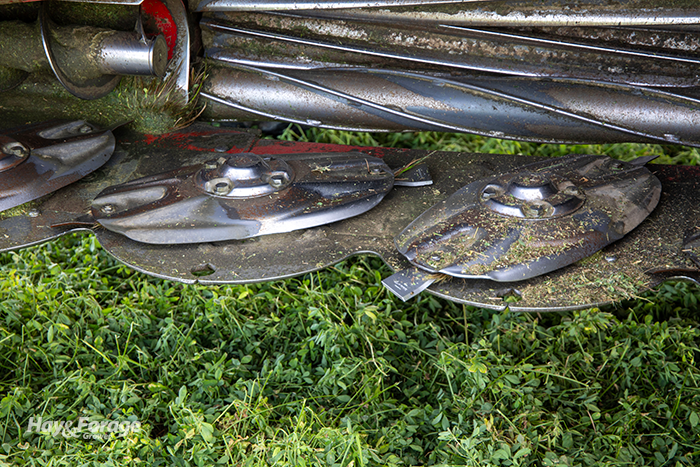How to harvest hail-damaged alfalfa |
| By Amber Friedrichsen, Managing Editor |
|
|
 Much of the excess precipitation that has plagued the Midwest so far this summer has come in the form of severe weather. In addition to heavy rains, high winds, thunder, and lightning, these storm cells can also bring on bouts of hail, which wreaks havoc on alfalfa. Hail batters plant stems and shreds alfalfa leaves. Depending on stand maturity, this damage not only limits forage growth and subsequent yield, but it can also result in significant quality loss. Shelby Gruss with Iowa State University says harvest timing after a hailstorm is a product of plant damage and proximity to the next cutting. To determine the former, the extension forage specialist suggests assessing terminal buds, also known as apical meristems. New growth will not occur on stems where the terminal bud has been severely damaged or completely removed by hail. Instead, alfalfa regrowth will start from the crown or axillary buds, which is a slower process. Gruss provides the following harvest recommendations for different situations in hail-damaged alfalfa stands. “Hail is hard to predict and avoid, but we can make the best out of a bad situation based on the harvest schedule and how much damage was done to the field,” she asserts. Close to cutting, extensive damage: When alfalfa is within two weeks of the next harvest and more than half of a stand has severed stems and terminal buds, Gruss recommends harvesting forage immediately if lodging is minimal. These plants will not continue to grow and yields will not improve since the major growing points have been affected. If lodging is problematic, wait three or four days to let plants recover, and then harvest alfalfa. Gruss notes disc mowers with angled knives will be better at picking up lodged plants compared to sickle bar mowers. She also suggests running equipment in the opposite direction as downed forage and tilting discs forward to combat lodging. Close to cutting, moderate damage: “If you are within two weeks of harvest and less than half of the terminal buds are damaged, allow the plants to grow until the cutting period, and then harvest,” Gruss states. “There will be reduced yield from the damaged stems, but the undamaged stems will continue to grow.” Far from cutting, variable damage: When plants that experience hail damage are less than 12 inches tall, allow alfalfa to regrow from new shoots and axillary buds. Wait to harvest forage until stands reach typical height and quality targets. Moreover, if this cutting will be chopped and ensiled, Gruss recommends raising the cutting height to 4 to 6 inches to promote more even regrowth and to omit the older, damaged plant material that could cause mold growth in the haylage. In addition to harvesting advice, Gruss suggests interseeding new alfalfa stands that suffer from hail damage. She notes that hail damage can be especially detrimental to plants that do not have established crowns, which typically develop when alfalfa is 3 to 4 inches tall. “Plants with damaged terminal buds but without a crown will die,” Gruss asserts. “Interseeding damaged stands less than one year old can help thicken alfalfa without the concern of autotoxicity. If there are more than 25 plants per square foot, the stand should be okay to leave,” she adds. |
